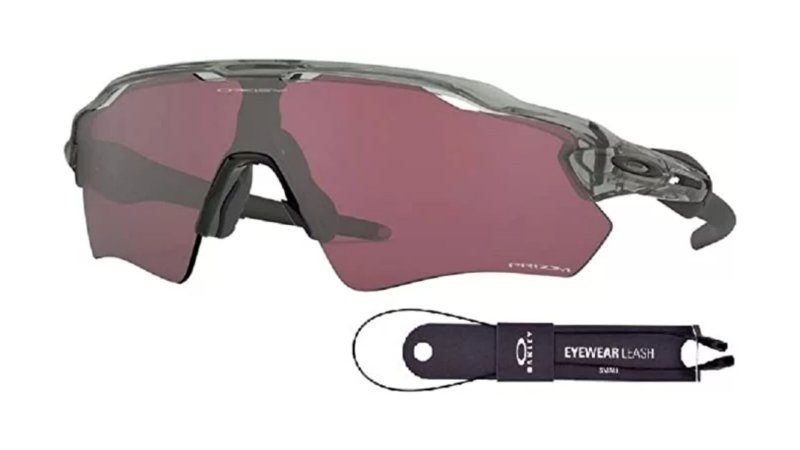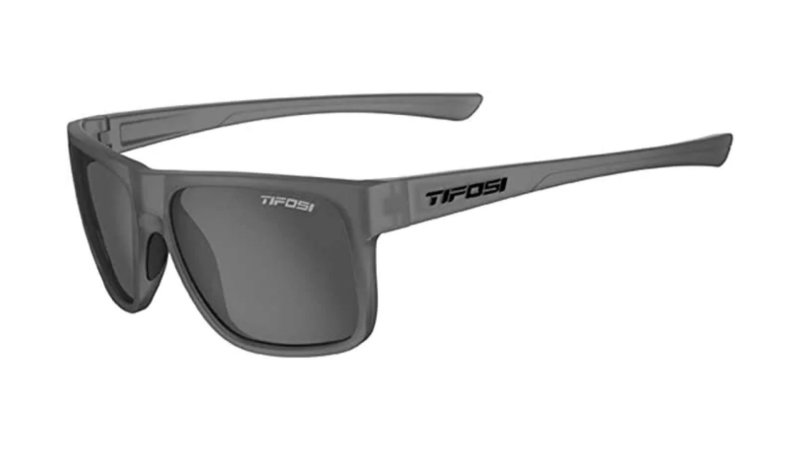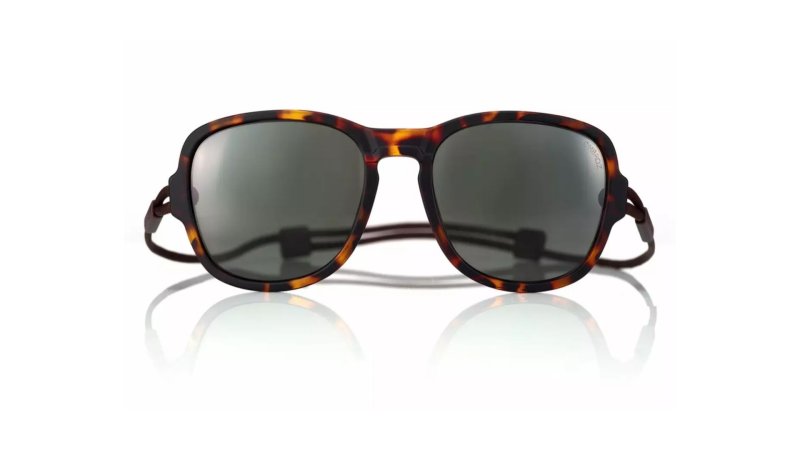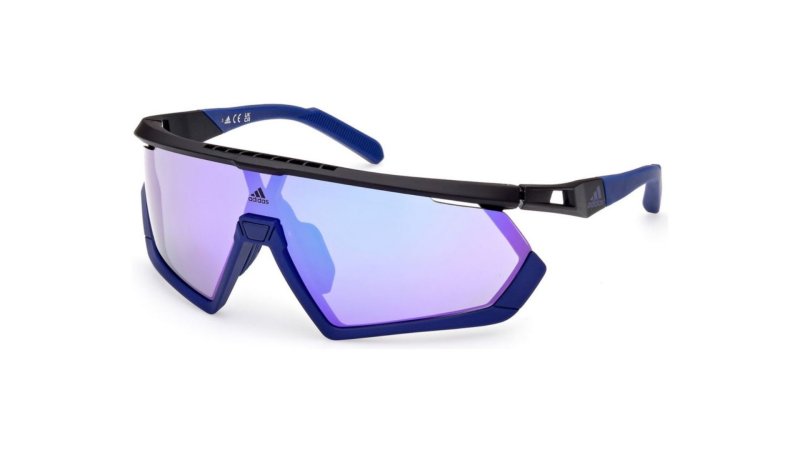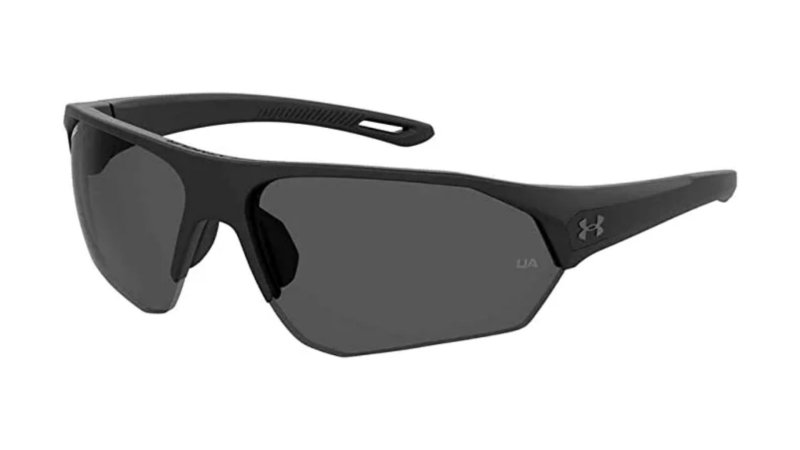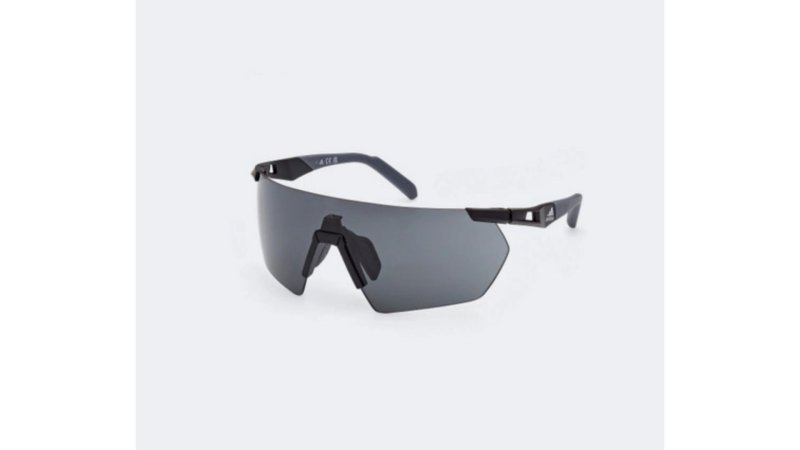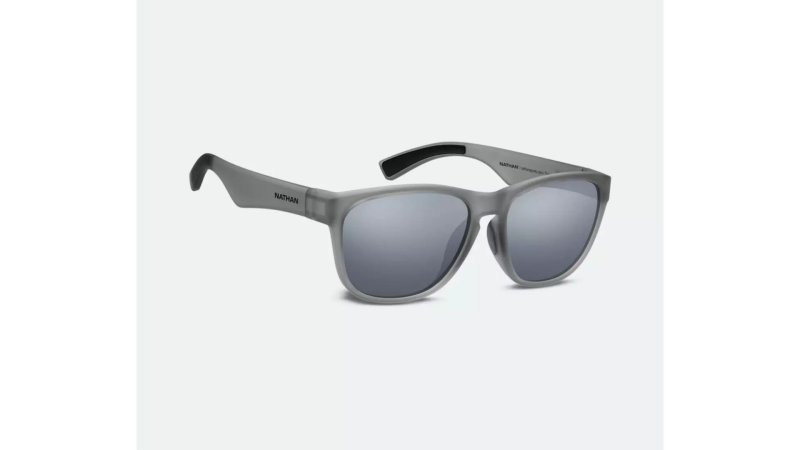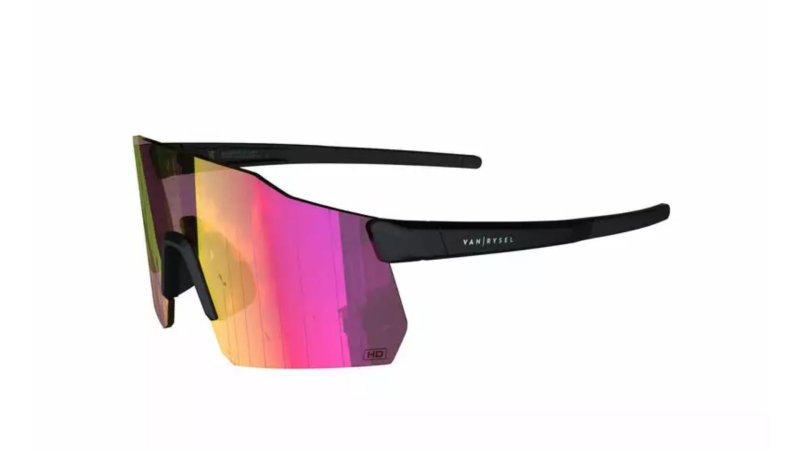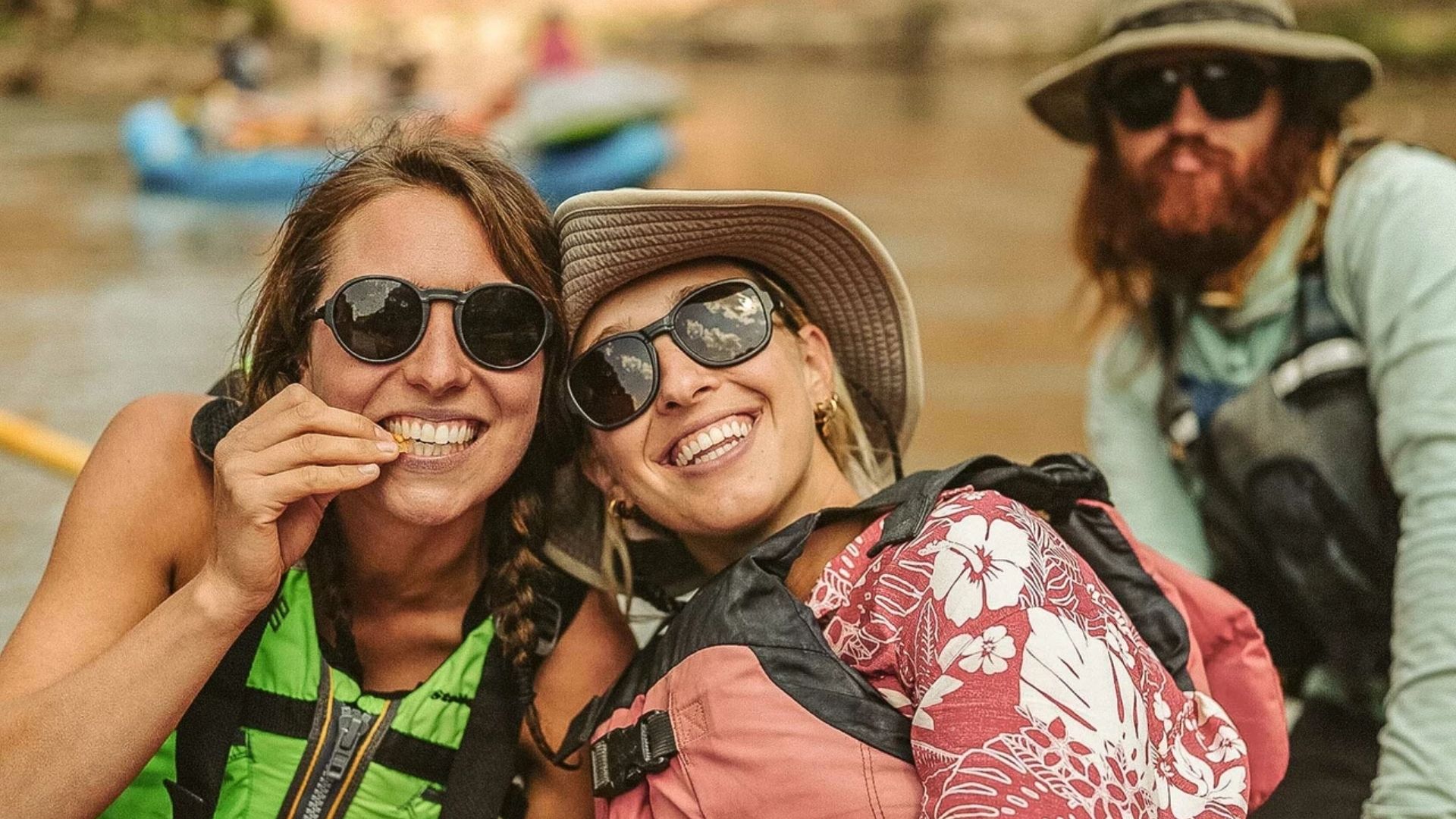

We may earn revenue from the products available on this page and participate in affiliate programs.
You can skimp on some gear, but when it comes to your eyes, you deserve the best protection. That’s why we’ve compiled a list of the best running sunglasses. Whether you rock a pair of White Walker blues, beautiful browns, or hazel peepers, protecting them from damaging UV light is important. The American Optometric Association recommends your sunglasses block out 99 to 100 percent of UVA and UVB rays, screen out 75 to 90 percent of visible light, and that the frames fit close to your eyes and the contour of your head to protect from all angles. Those of you who participate in snow sports immediately understand this.
We used this general professionally-recommended criterion as the basis for our evaluation, and also took the cool factor into account — because we don’t want you going around looking like complete dorks (paging Marine Corps officers). So buckle up and take a look at what we scrounged up as the best running sunglasses of the year.
- Best Overall: Oakley Radar EV Path
- Best Value: Tifosi Swick Satin Vapor
- Most Innovative: Ombraz Teton
- Best for Triathlons: Adidas Sport SP0054
- Honorable Mention: Under Armour Playmaker
- Best for Your Inner Terminator: Adidas Sport SP0062
- Most Versatile: Nathan’s Summit Polarized Running Sunglasses
- Honorable Mention Value Sunglasses: Decathlon Roadr 920 Van Rysel
Best Overall
Oakley Radar EV Path
Pros
- Superior lens technology
- Superior fit
- Excellent coverage
- Outstanding customizability
Cons
- Sport-specific look limits versatility
Product Specs:
- Fit: Large
- Weight: 28 grams
- Frame: Lightweight O Matter frame material
- Lenses: Prizm polarized
- Visible light transmission: Category 3 (11%)
- Color: Gray
Dimensions:
- Lens: 38mm x 50.5mm
- Bridge: 13.8mm
- Temple: 128mm
Best Value
Tifosi Swick Satin Vapor
Pros
- Blocks 100% of harmful light
- Super comfortable
- Very light
- Don’t slip when face is sweaty
- Shatterproof
- Polarized
Cons
- Moderate lens quality
- No hydrophilic rubber on inside of temples
- No anti-fog vents
Product Specs:
- Fit: Medium to large
- Weight: 26 grams
- Frame: Light and durable Grilamid TR-90
- Lenses: Shatterproof polycarbonate
- Visible light transmission: Category 3 (13%)
- Color: Smoke
Dimensions:
- Lens: 44.5mm x 58.3mm
- Bridge: 14mm
- Temple: 131.5mm
Most Innovative
Ombraz Teton
Pros
- Superior polarized Carl Zeiss lenses!
- Super comfortable
- Superior retention
- Lightest frames we tested
- Scratch-resistant
- Flat packability
Cons
- Corded fit takes a bit of getting used to
- Hard to adjust with one hand
Product Specs:
- Fit: Large and extra large
- Weight: 20 grams
- Frame: TR-90
- Lenses: Carl Zeiss polarized polyamide
- Visible light transmission: Category 3 (11% VLC)
- Color: Gray (11% VLC), brown (13.5 VLC) and yellow (20 VLC)
Dimensions:
- Lens: 53mm x 45.3mm
- Bridge: 19.9mm
- Temple: NA – they removed them!
Best for Triathlons
Adidas Sport SP0054
Pros
- Comprehensive, wraparound coverage
- Forgettably comfortable
- Superb anti-fog ventilation
- High-definition Contrast (HDC) lenses
- Rubberized nose pads and temple ends
Cons
- Not polarized
Product Specs:
- Fit: Large
- Weight: 28 grams
- Frame: Light and durable TR-90
- Lenses: HDC contrast polycarbonate
- Visible light transmission: Category 3 (13.5%)
- Color: Smoke
Dimensions:
- Lens: 143mm
- Bridge: 7mm
- Temple: 135mm
Honorable Mention
Under Armour Playmaker
Pros
- Straightforward design
- Decent coverage
- Auto-locking hinges
- Adjustable nosepiece
Cons
- Not polarized
- Fit feels tight to some with larger faces
Product Specs:
- Fit: Large
- Weight: 28 grams
- Frame: Light and durable TR-90
- Lenses: Polycarbonate
- Visible light transmission: Category 3
- Color: Gray
Dimensions:
- Lens: 72mm
- Bridge: 10mm
- Temple: 130mm
Best for Your Inner Terminator
Adidas SP0062
Pros
- Unobstructed wrap-around coverage
- Super lightweight
- Adjustable rubberized nose pads
- Quick lens change capable
- Mountable optical prescription lens clip-in capable
Cons
- Not polarized
- More flexible, flimsy feel; durability concern
Product Specs:
- Fit: Large
- Weight: 29 grams
- Frame: Light and durable TR-90
- Lenses: HDC contrast polycarbonate
- Visible light transmission: Category 3 (13.5%)
- Color: Smoke
Dimensions:
- Lens: 138mm
- Bridge: 7mm
- Temple: 135mm
Most Versatile
Nathan’s Summit Polarized Running Sunglasses
Pros
- Lightweight
- Polarized
- 100% UV protection
- RX lens compatible
- Rubber grips at nose and temple
Cons
- Nose pads not adjustable
Product Specs:
- Fit: One size fits most
- Weight: 28 grams
- Frame: TR-90
- Lenses: Polycarbonate
- Visible light transmission: Category 3 (15% VLT)
- Color: Gray smoke
Dimensions:
- Lens: 56mm
- Bridge: 15mm
- Temple: 146mm
Honorable Mention Value Sunglasses
Decathlon Roadr 920 Van Rysel
Pros
- Very light
- Comfortable fit
- Good coverage
- HD lens
Cons
- Not polarized
- Nose piece not adjustable
- Not compatible with some cycling helmets
Product Specs:
- Fit: One size fits most
- Weight: 27 grams
- Frame: 80% Polyamide 11, 20% Styrene Ethylene Butadiene Styrene
- Lenses: Polycarbonate
- Visible light transmission: Category 3 (12%)
- Color: Gray mirrored
Dimensions:
- Lens: 140mm
- Bridge: NA
- Temple: 124mm
Things to consider before buying running sunglasses
Running sunglasses need to perform three essential tasks. First, they need to protect your eyes from harmful UV rays. Second, they need to help you see better in variable light conditions. And third, they need to stay on your face — even when you are sweaty, when it’s windy, and when you are barreling downhill.
Protection
That big thermonuclear fusion ball of energy we call the sun kicks off massive amounts of warmth and light that enables life on our planet, and it also kicks off some light in wavelengths that can be harmful to our eyes. Most people wear sunscreen to protect their skin from ultraviolet (UV) radiation, and all of us should wear sunglasses to protect the sensitive tissues in our eyes from the same. UV radiation has been shown to cause debilitating eye diseases like cataracts, macular degeneration, keratitis (corneal sunburn), conjunctival cancers, and more. The good news is that prevention is easy, and you can look cool doing it. Wear sunglasses whenever you are out in the sun — even on cloudy days — and choose sunglasses that block 99 to 100 percent of UVA and UVB light. You’ll also want to look for lenses that protect your eyes from impact and punctures — especially while trail running — with an ANSI Z80.3 seal of approval for basic or Z87.1 high impact rating. All of these ratings can be found on the Use and Care information sheet that comes with each pair of sunglasses that you, like me, probably never read and throw away.
Lens category
Sunglass lenses come in five categories from zero (clear or light tint) to four (very dark tint). You can find this information on the inside of sunglass temples or on the accompanying information sheet. Look for Category Three lenses for most running purposes. If you are running in the mountains on snow, you might consider Category Four glacier glasses to prevent scorching your corneas and snow blindness, which really, really sucks. You’ll also want to pay attention to the Visual Light Transmission (VLT) rating, which tells you how much light the lens allows to pass through. For instance, a VLT of 11 percent means the lens is filtering out 89 percent of the light. The lower the VLT number, the darker the lens. Glasses with a VLT of one to 19 percent are good for bright conditions. I prefer glasses with a VLT of 11 to 13 percent in sunny conditions, and use 30 to 40 percent VLT lenses for cloudy, foggy days.
Polarization
Hate bright glare? Me too. Polarized lenses are the solution. These lenses have a special chemical applied to them that filters light. There’s a lot of molecular science behind this, which I won’t go into here. What you need to know is that polarization reduces light, theoretically, by 50 percent, but in effect by about 38 percent because no polarization is manufactured perfectly. So it makes things darker and also reduces glare from horizontal surfaces like water, snow, cars, etc, so images also appear crisper and details are easier to see. If you want to nerd out on the science, watch this video. Note: They do make it harder to read LCD screens, and they do make reflective surfaces, like oil slicks and ice, a bit harder to see.
Fit
Newsflash! No two heads are identical and “one size fits all” is bullshit. Always try on sunglasses. Check out the coverage around your eyes. Shake your head vigorously to see if you can throw them off. Check to see if they have grippy rubber at the nose and on the temples to avoid slippage when sweating. Also, check for any pinch points and make sure they’re comfortable. The best-designed glasses are the ones you forget you are wearing.
FAQs about running sunglasses
Q: How much do running sunglasses cost?
A: You can get $5 sunglasses if you have a $5 head. They’re out there, and if they don’t block UV light, they’ll damage your eyes. I’ve seen quality sunglasses range from $25 to $50 for value glasses, $50 to $100 for mid-range glasses, and $100 and up for premium shades. If you have $470 to burn, Oakley will sell you a pair of Zeus.
Q: Why are there so many lens colors?
A: Different lenses filter out different light in different amounts and affect how much contrast and what colors you see. Gray, green, and brown lenses are normally used for outdoor activities to cut glare and reduce eye fatigue. Gray and green typically don’t distort color. Yellow and vermillion lenses are designed for use in low-light conditions and enhance contrast. This can be important when you are skiing or snowboarding, as they improve the visibility of objects in the landscape.
Q: What are sunglass lenses made of?
A: Most are made from either polycarbonate or glass. Polycarbonate is lighter than glass, provides better impact protection, and delivers great clarity, but scratches more easily. Glass is heavier and resists scratches better. It’s also more expensive.
Q: What about lens coatings?
A: Sunglasses often come with one or more chemically-applied coatings to make them tougher to scratch, less likely to fog up, repel water, or mirrored to reflect more sunlight and reduce glare.
Final thoughts
Hands down, Oakley remains the king of sport optics, and its Radar EV Path sunglasses were my top pick for quality of manufacturing, optical clarity and performance, eye protection, coverage, fit, retention, ventilation, Rx compatibility, and weight. They’re not the most versatile glasses — I wouldn’t wear them while not exercising. But I would wear them running on both road and trail in every weather condition. They’re expensive though, and you don’t need to pay $261 for functional, well-fitting running glasses.
Methodology
I selected all of the sunglasses in this review based on personal ownership, hands-on inspection, performance reputation, interviewing other experts, and thoroughly reviewing manufacturers’ specifications. I took my time to get to know the strengths and weaknesses of each item, and also checked out the reviews of other experts just to make sure we weren’t missing anything. For new items, I asked for samples from the makers and tested them in the field. When that wasn’t possible, I visited the products in the store. In either case, I also reviewed the manufacturers’ websites, user comments, YouTube reviews, and third-party evaluations, just to make sure I wasn’t missing anything.
When researching the best running sunglasses, I based my criteria on my own experiences using outdoor gear in the field for more than 35 years. I’m very familiar with the major manufacturers of outdoor equipment, know their reputations, and have a sense of their customer service — which is also super important. I also speak with other people who spend considerable time outdoors for their thoughts, as well.
After gathering enough high-performing products for a best-of article, I racked and stacked each based on their attributes, design, and performance. My bias is towards the lightest, best-functioning, and lowest-cost solutions available. We don’t torture test gear here at Task & Purpose — we test within normal usage limits. When gear does fail or break, we contact the manufacturer to see if and how it stands by its products. I also take a look at how easy the gear is to maintain or repair in the field — the simpler, the better.
For final selection, I take all factors into consideration and think, what is the gear I’d most want in my pack? What would I trust my life to in the backcountry? Those are the recommendations I forward for your consideration. Furthermore, it’s of the utmost importance to the Task & Purpose team that our readers know our commitment to open, fair product recommendations and reviews, and that you can trust us to provide you with unbiased, balanced information.
